Virus glass sculpture exhibition opens in Bristol
- Published
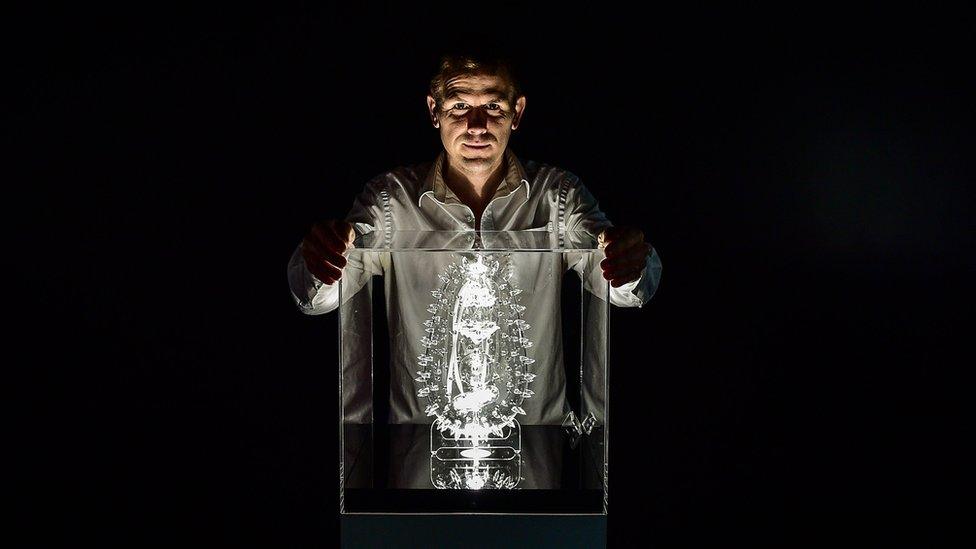
Bristol-based artist Luke Jerram worked with University of Bristol virologists to ensure each model was accurate
Glass sculptures depicting the world's most deadly viruses have gone on display.
Artist Luke Jerram worked with University of Bristol virologists to ensure the models - which include HIV, swine flu and smallpox - were accurate.
He said his Glass Microbiology exhibition was designed to "contemplate the global impact of each disease".
The exhibition will be on at the At-Bristol science museum until 4 September.
The sculptures, which are not restricted solely to depictions of viruses, were made in collaboration with glassblowers Brian Jones and Norman Veitch.
Mr Jerram's previous art projects include turning Park Street in Bristol into a giant water slide, and mooring a flotilla of abandoned fishing boats in Leigh Woods.
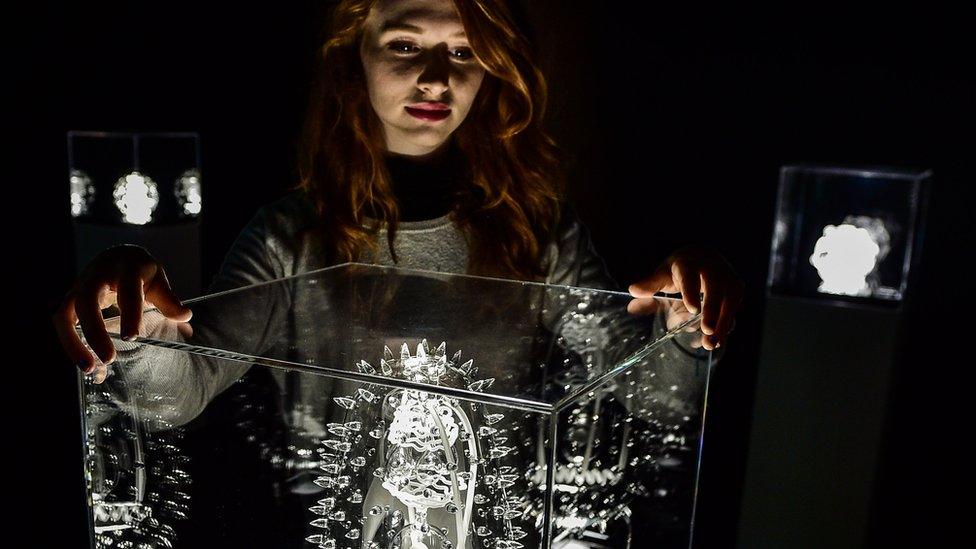
Tamsin Huggins, 22, from Bristol, looks at a malaria-inspired glass sculpture
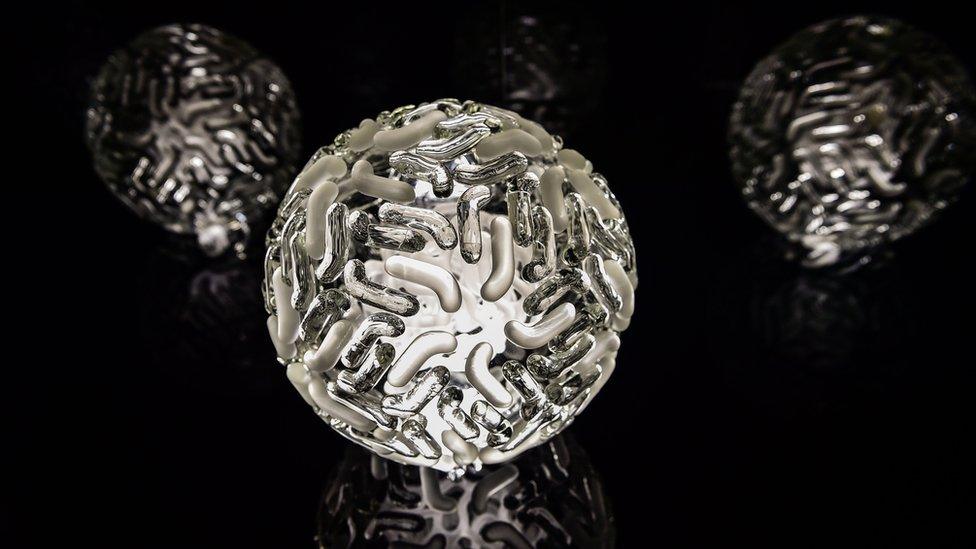
A sculpture of the Zika virus

The HIV virus is also represented among the sculptures
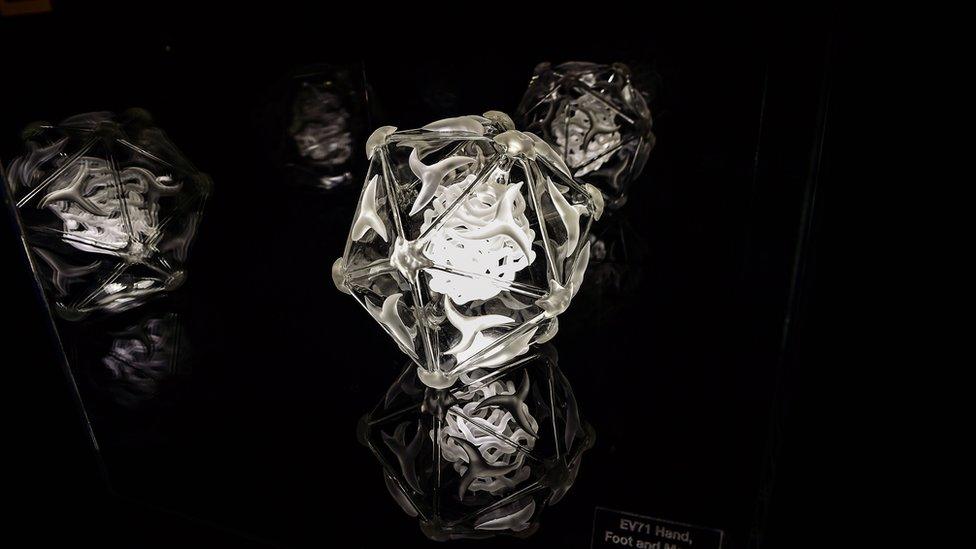
A glass sculpture of the EV71 hand-foot-and-mouth disease (HFMD) - the virus can cause a fever and unsightly lesions but is not deadly
- Published15 October 2015
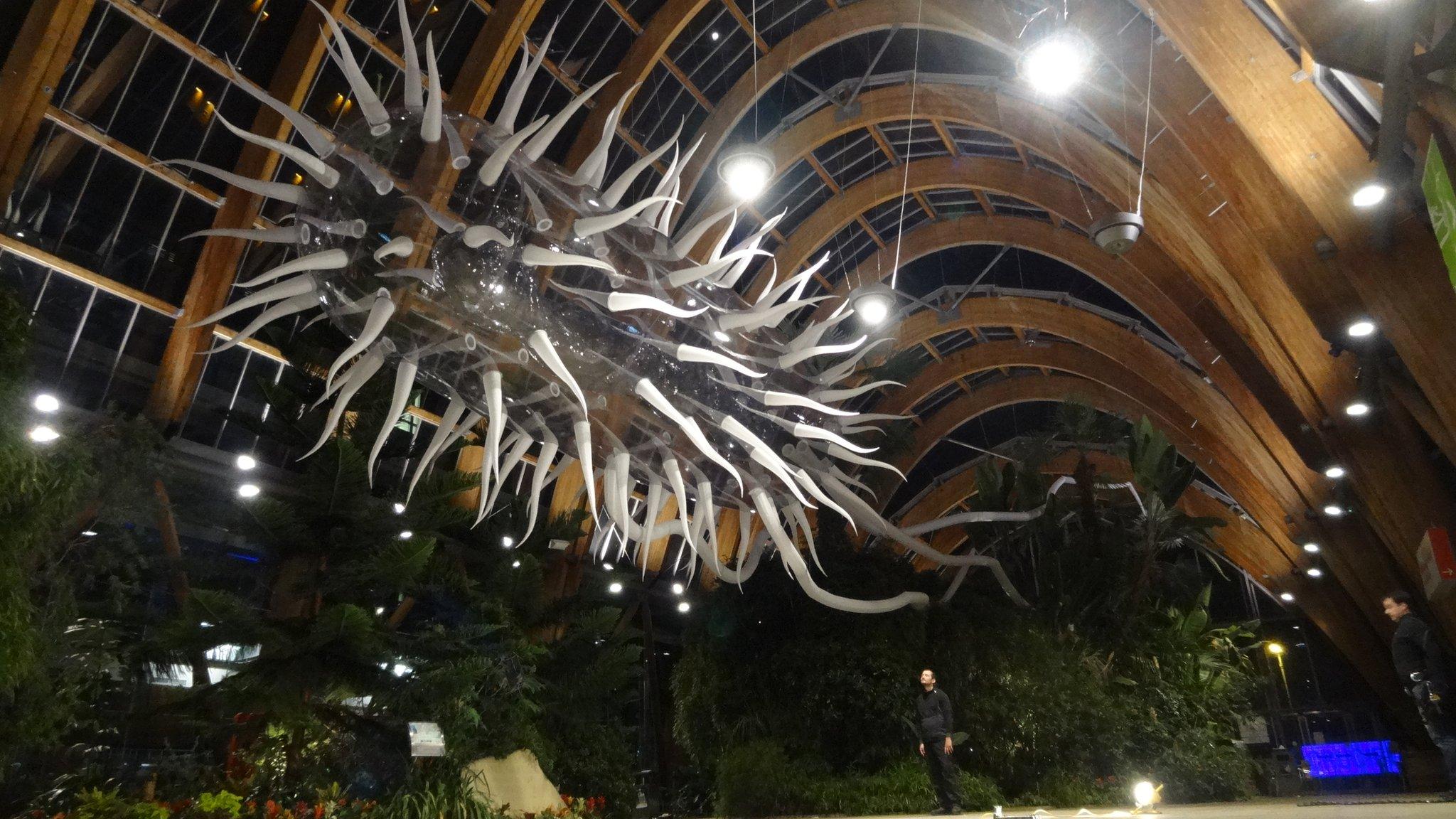
- Published2 May 2014
